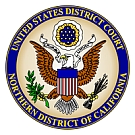( ESNUG 547 Item 1 ) -------------------------------------------- [02/06/15]
Subject: Aart's SUE RIVALS policy backfires horribly on core SNPS patents
> WILSONVILLE, Ore., Jan 20, 2015 - Mentor Graphics Corp. today announced
> that a California federal district court has issued a summary judgment
> order in favor of Mentor Graphics invalidating all asserted claims of
> three patents asserted by Synopsys, Inc.
>
> The lawsuit, initiated by Synopsys in 2012, involved 4 patents covering
> synthesis technology. Litigation of the fourth patent is stayed pending
> an inter parties review by the Patent Trial and Appeal Board of the
> U.S. Patent Office. Any trial on this patent will be postponed until
> after the Patent Office has completed its review.
>
> - Mentor Graphics press release of 01/20/15
From: [ John Cooley of DeepChip.com ]
First a fun quickie summary to set the stage:
- To keep Intel as a happy customer, Aart de Geus decides to: "acquire
EVE and its line of Zebu HW emulators in order to counter the
Cadence Paladium offering in the Intel bid." from ESNUG 510 #6.
   - 48 days go by...
- Sept 28, 2012, 7 days *before* the actual EVE acquistion was announced,
Aart's attack lawyers file in court to:
1.) move the lawsuit out of Oregon and into San Jose, CA
2.) have the MENT patents involved declared invalid, and
3.) if valid, have the court declare SNPS/EVE ZeBu doesn't
infringe the MENT patents involved.
- from http://www.deepchip.com/items/0510-06.html
- Almost immediately the courts say the Oregon case stays in Oregon,
and the California case stays in California.
- 24 months later on Oct. 2014, the Oregon court says Synopsys had
violated Mentor's patents -- and it awards MENT $36 million:
- 48 days go by...
- Sept 28, 2012, 7 days *before* the actual EVE acquistion was announced,
Aart's attack lawyers file in court to:
1.) move the lawsuit out of Oregon and into San Jose, CA
2.) have the MENT patents involved declared invalid, and
3.) if valid, have the court declare SNPS/EVE ZeBu doesn't
infringe the MENT patents involved.
- from http://www.deepchip.com/items/0510-06.html
- Almost immediately the courts say the Oregon case stays in Oregon,
and the California case stays in California.
- 24 months later on Oct. 2014, the Oregon court says Synopsys had
violated Mentor's patents -- and it awards MENT $36 million:
  Late last Friday afternoon (3 days ago) MENT issued a press
release that a jury in the U.S. District Court in Oregon had
just awarded Mentor Graphics $36 million in damages "plus
certain royalties" from Synopsys, Inc. for SNPS/EVE
infringing MENT's U.S. Patent No. 6,240,376.
- from http://www.deepchip.com/items/0538-11.html
- Mentor's lawyer warns that $36 million is just for past infringment
and overall damages could be 15% of EVE ZeBu's gross sales -- thus
making it too expensive for Aart to sell ZeBu boxes. Plus:
An injunction could further apply to service contracts for
previously purchased ZeBu emulators, preventing Synopsys
from providing customers with support and maintenance
for the infringing technology in those emulators.
- Tom Evans, Mentor Corporate Counsel, ESNUG 538 #13
Oh, and it's possible that SNPS EVE ZeBu customers can now be sued,
too, for violating MENT's U.S. Patent No. 6,240,376. YIKES!
Late last Friday afternoon (3 days ago) MENT issued a press
release that a jury in the U.S. District Court in Oregon had
just awarded Mentor Graphics $36 million in damages "plus
certain royalties" from Synopsys, Inc. for SNPS/EVE
infringing MENT's U.S. Patent No. 6,240,376.
- from http://www.deepchip.com/items/0538-11.html
- Mentor's lawyer warns that $36 million is just for past infringment
and overall damages could be 15% of EVE ZeBu's gross sales -- thus
making it too expensive for Aart to sell ZeBu boxes. Plus:
An injunction could further apply to service contracts for
previously purchased ZeBu emulators, preventing Synopsys
from providing customers with support and maintenance
for the infringing technology in those emulators.
- Tom Evans, Mentor Corporate Counsel, ESNUG 538 #13
Oh, and it's possible that SNPS EVE ZeBu customers can now be sued,
too, for violating MENT's U.S. Patent No. 6,240,376. YIKES!
  - Now the big question is: "what about the California case where
Aart's attack lawyers are claiming that MENT is violating four
SNPS patents?"
- 3 months go by...
AND NOW THE "NEW" NEWS:
Jan. 20th, 2015
A California federal judge, Maxine Chesney, issued a finding that three of
the Synopsys patents are NOT "patent-eligible" based on Alice vs. CLS Bank;
where if you can not patent something you do in real life, doing that exact
same thing in software does NOT make those techniques patentable.
- Now the big question is: "what about the California case where
Aart's attack lawyers are claiming that MENT is violating four
SNPS patents?"
- 3 months go by...
AND NOW THE "NEW" NEWS:
Jan. 20th, 2015
A California federal judge, Maxine Chesney, issued a finding that three of
the Synopsys patents are NOT "patent-eligible" based on Alice vs. CLS Bank;
where if you can not patent something you do in real life, doing that exact
same thing in software does NOT make those techniques patentable.
   In this case, Brent Gregory and Russ Segal, both of Synopsys had patented
three abstract ideas:
- U.S. Patent No. 5748488 -- "Method for generating a logic circuit
from a hardware independent user description using assignment
conditions"
- U.S. Patent No. 5530841 -- "Method for converting a hardware
independent user description of a logic circuit into hardware
components"
- U.S. Patent No. 5680318 -- same as 5530841 but adds "In a computer
system"
Which taken altogether is basically the concept of taking the description of
a chip and converting it to gates by way of software (i.e. "synthesis").
The problem is that engineers have been doing this for DECADES. It's called
taking an HDL chip spec and hand implementing it in a schematic.
"The methods that humans were using to convert HDLs to circuits
weren't methods that were -- that you could run on a computer and
do automatically.
So the thing that Russ and I were charged with was figuring out how to
take this manual process that human beings were doing... and figure
out how we could come up with a method so a computer could do it."
- Brent Gregory deposition 239:2-12
"Each of the steps in the claimed methods can be performed by a
skilled designer either mentally or with pencil and paper, and
the examples in the patents were created by the inventors
without use of a computer."
- Hon. Maxine Chesney in U.S. Court Order No. C 12-6467 MMC
SO... since Synopsys, Inc. does NOT have patents on the hand optimization
techniques that every 2nd year engineering student knows how to do with
paper and pencil like logic manipulation, truth tables, and Karnaugh maps;
and because of the 2014 SCOTUS Alice vs. CLS Bank decision it now means
Synopsys can NOT patent logic equation manipulation, truth tables, and
Karnaugh maps that are done by computer.
In this case, Brent Gregory and Russ Segal, both of Synopsys had patented
three abstract ideas:
- U.S. Patent No. 5748488 -- "Method for generating a logic circuit
from a hardware independent user description using assignment
conditions"
- U.S. Patent No. 5530841 -- "Method for converting a hardware
independent user description of a logic circuit into hardware
components"
- U.S. Patent No. 5680318 -- same as 5530841 but adds "In a computer
system"
Which taken altogether is basically the concept of taking the description of
a chip and converting it to gates by way of software (i.e. "synthesis").
The problem is that engineers have been doing this for DECADES. It's called
taking an HDL chip spec and hand implementing it in a schematic.
"The methods that humans were using to convert HDLs to circuits
weren't methods that were -- that you could run on a computer and
do automatically.
So the thing that Russ and I were charged with was figuring out how to
take this manual process that human beings were doing... and figure
out how we could come up with a method so a computer could do it."
- Brent Gregory deposition 239:2-12
"Each of the steps in the claimed methods can be performed by a
skilled designer either mentally or with pencil and paper, and
the examples in the patents were created by the inventors
without use of a computer."
- Hon. Maxine Chesney in U.S. Court Order No. C 12-6467 MMC
SO... since Synopsys, Inc. does NOT have patents on the hand optimization
techniques that every 2nd year engineering student knows how to do with
paper and pencil like logic manipulation, truth tables, and Karnaugh maps;
and because of the 2014 SCOTUS Alice vs. CLS Bank decision it now means
Synopsys can NOT patent logic equation manipulation, truth tables, and
Karnaugh maps that are done by computer.
 Did you get that?
Again in general EDA terms: because of this recent Alice decision, all those
EDA patents based on simply implementing an everyday design or verification
technique in software is NOT enough to make it a patentable invention.
This means a great many active EDA SW patents are actually now invalid!
Did you get that?
Again in general EDA terms: because of this recent Alice decision, all those
EDA patents based on simply implementing an everyday design or verification
technique in software is NOT enough to make it a patentable invention.
This means a great many active EDA SW patents are actually now invalid!
   All this because Aart de Geus sent his lawyers on a pre-emptive attack vs.
MENT in his EVE acquisition. It's this one particular SNPS lawsuit that
opened the doors for Alice vs. CLS Bank to come into EDA. Too funny! :)
---- ---- ---- ---- ---- ---- ----
BUT WHAT ABOUT THAT 4TH SNPS PATENT...
While the judge in the Synopsys California case invalidated the 3 synthesis
patents that formed the historical core of Design Compiler, she did not rule
on the fourth patent:
- U.S. Patent No. 6836420 -- "Method and apparatus for resetable
memory and design approach for same"
Which was filed by Vijay Seshadri and Ken McElvain, both of Synplicity, back
in 2002 -- which SNPS got when it paid $227 million for SYNP back in 2008.
All this because Aart de Geus sent his lawyers on a pre-emptive attack vs.
MENT in his EVE acquisition. It's this one particular SNPS lawsuit that
opened the doors for Alice vs. CLS Bank to come into EDA. Too funny! :)
---- ---- ---- ---- ---- ---- ----
BUT WHAT ABOUT THAT 4TH SNPS PATENT...
While the judge in the Synopsys California case invalidated the 3 synthesis
patents that formed the historical core of Design Compiler, she did not rule
on the fourth patent:
- U.S. Patent No. 6836420 -- "Method and apparatus for resetable
memory and design approach for same"
Which was filed by Vijay Seshadri and Ken McElvain, both of Synplicity, back
in 2002 -- which SNPS got when it paid $227 million for SYNP back in 2008.
   Mentor's comment on this yesterday was:
"The remaining Synopsys patent, the '420 issued to Vijay Seshadri,
is now undergoing an inter partes review by the US Patent Office.
The likelihood that the Patent Office will invalidate all of the
claims of that patent is about 80%.
And if the '420 patent survives the inter partes review, it is
still subject to the same invalidation of software-related patents
rulings that led the San Francisco judge to invalidate the three
Gregory patents."
- Tom Evans, Mentor Corporate Counsel, 02/05/15
PERSONAL NOTE: And since Synopsys did NOT issue a press release on this
court finding, I knew to not bother asking the SNPS Public Relations lady
for the SNPS lawyer's input on this. "She already hates me enough as it is;
why throw gasoline on the fire?" :)
- John Cooley
DeepChip.com Holliston, MA
---- ---- ---- ---- ---- ---- ----
Related Articles:
Rumor is Synopsys put a bid on EVE to lock in Intel on renewal
SNPS-acquires-EVE rumor confirmed plus Aart is now suing Wally
Aart's SUE RIVALS policy backfires to tune of $36 M in damages
Mentor's comment on this yesterday was:
"The remaining Synopsys patent, the '420 issued to Vijay Seshadri,
is now undergoing an inter partes review by the US Patent Office.
The likelihood that the Patent Office will invalidate all of the
claims of that patent is about 80%.
And if the '420 patent survives the inter partes review, it is
still subject to the same invalidation of software-related patents
rulings that led the San Francisco judge to invalidate the three
Gregory patents."
- Tom Evans, Mentor Corporate Counsel, 02/05/15
PERSONAL NOTE: And since Synopsys did NOT issue a press release on this
court finding, I knew to not bother asking the SNPS Public Relations lady
for the SNPS lawyer's input on this. "She already hates me enough as it is;
why throw gasoline on the fire?" :)
- John Cooley
DeepChip.com Holliston, MA
---- ---- ---- ---- ---- ---- ----
Related Articles:
Rumor is Synopsys put a bid on EVE to lock in Intel on renewal
SNPS-acquires-EVE rumor confirmed plus Aart is now suing Wally
Aart's SUE RIVALS policy backfires to tune of $36 M in damages
Join
Index
Next->Item
|
|



